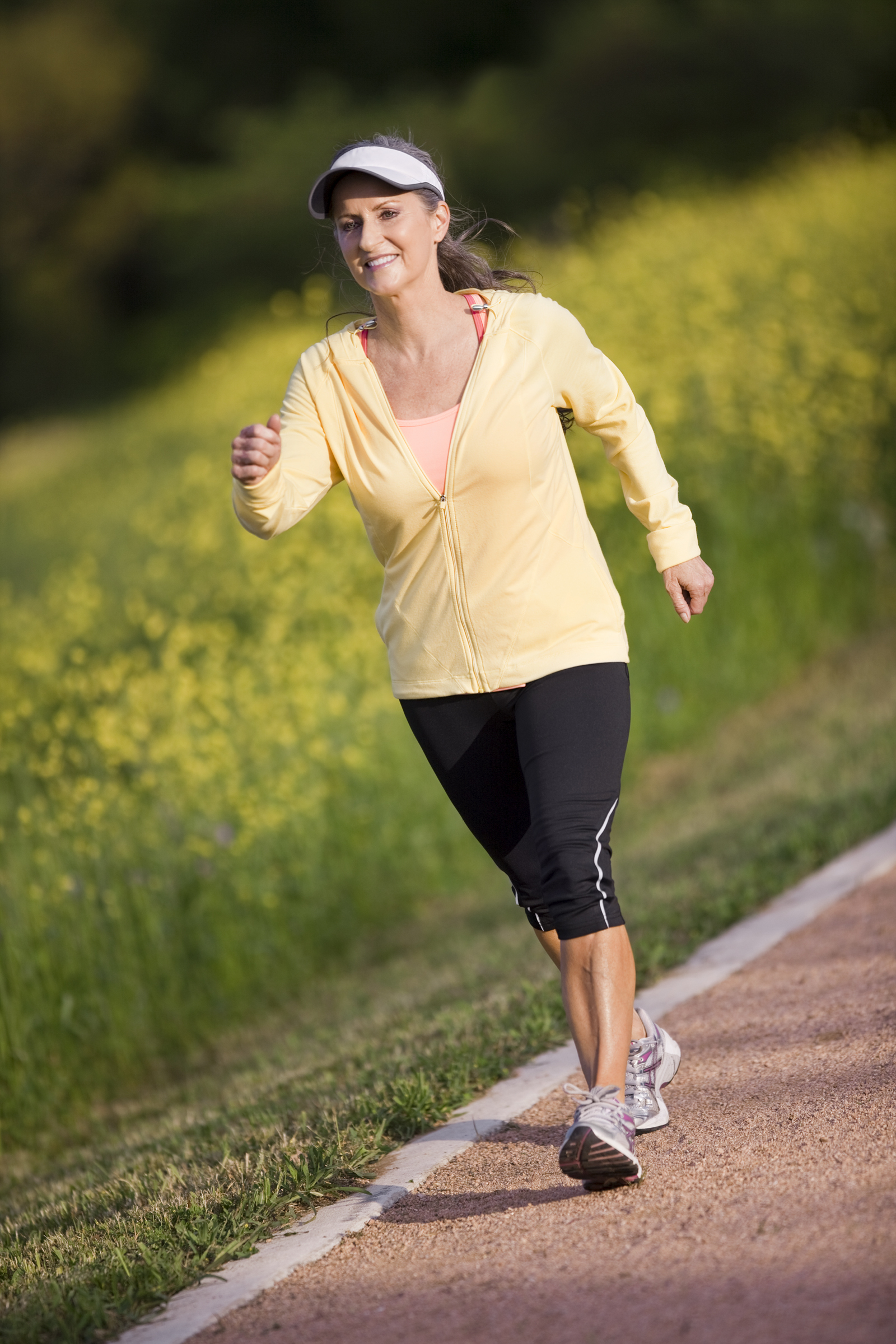Though there are myriad workouts that one can do, there are just as many excuses! Swimming; can’t bear getting wet. Running? Painful cramps in your sides. Spin class? Such a headache. Pilates? Wallet breaking! Walking? Can you think of one reason why not? Finally we have found a workout completely devoid of downsides. According to ample scientific research, walking properly and regularly can render a host of benefits that are even more impressive than those gained from more flashy, sportier regimens.
Long, peaceful walks calm you down, pace your thoughts, and clear your head, in addition to an array of physical benefits. Let’s not forget that walking allows you to garner toned abs, shed any unflattering pounds, and glean sumptuous legs without breaking your bank with a costly gym membership. All you need to do is kick on your running shoes, blast on some great tunes, and get set walk! Here’s what walking can do for your body:
1.Lowers Risk of Cardiovascular Problems
According to the scientific evidence provided by the Harvard Medical School, walking 20 minutes day can alleviate the risks of cardiovascular ailments by 30%. It even goes as far as to say that regular walks could save Americans billions of dollars a year incurred in health care costs. Walking is one of the greatest low-impact cardio exercises, enhancing the level of HDL (good) cholesterol, and curbing the production of LDL (bad) cholesterol.
According to the Stroke Association, a brisk 30 minute walk everyday can control and prevent extremely high blood pressures that lead to stroke, by almost 27%. However, if your knees do not allow you to walk fast, you can always level your pace to suit your body.
2. Curbs Diabetes
Walking is one of the best ways to keep Diabetes at bay, according to the American Diabetes Association. You can begin with a 5 minute slow-paced saunter, stretch for ten minutes, followed by a walk at moderate pace. Make sure to keep your chin up and spine straight. Some days, you can push yourself to walk briskly, while cut yourself some slack on the other days and proceed at a leisurely pace.
James O. Hill, PHD from the University of Colorado at Denver, states that tweaking your lifestyle to incorporate small changes, such as taking time out for daily ambles, can make a momentous change in the life of a Diabetes patient, and assuage his overall healthcare expenses. To garner great results fast, start out with 30 minutes of walk a day, accelerating it to 77 minutes subsequently. However, if you even feel a little faintness or weakness, stop immediately
3. Prevents Cancer
Harvard University Women’s Health Study published their findings in 2012 that walking for almost 2-3 hours a week alleviates the risk of demise from uterine and breast cancer by almost 19%, and if you push yourself and increase the walking time to almost 4 hours a week, you could decrease the chances of cancer to almost 54%. A research published in the journal Cancer Epidemiology, Biomarkers & Prevention, discovered that walking for 7 hours a week, and alleviates the chances of breast cancer by 14%.
4. Boosts Your Memory
While any exercise that gets your heart pumping is great for your brain, walking in particular has a great role to play in boosting memory. Walking accomplishes so much more than working the zone underneath your neck. It also offers wide-ranging cognitive benefits, such as enhancing memory in elders, boosting academic performance and cognitive control in preadolescents, and revamping creativity in the young when it is performed outdoors. It has been shown that the longer that an old citizen can walk in 6 minutes, the better they would fare on logic and memory tests.
Adults who cannot walk for long tend to have lesser grey matter volume in particular sections of their brains. A study published in The Proceedings of the National Academy of Sciences in 2011, proved how walking for forty minutes, about three times a week could enhance the volume of the hippocampus by 2%, a staggering change.
Another study published at the annual meeting of the American Association for the Advancement of Science in 2014, concluded that garnering regular walks can slow down the faltering mental skills and the shrinking of the brain that is the side effect of old age. The study scrutinized subjects between the ages of 60 and 80, and published evidence the brisk walking three times a week augments the part of our brains linked to memory and planning.
5. Battles Obesity
When opponents of walking assert that walking is the easiest type of workout, know that they are doing something wrong. This is because instead of strolling leisurely at snail pace, you can only glean a slender waist when you walk briskly and kick the intensity up a notch. Simply walking at 2mph for half an hour can help you burn 75 calories. Push your speed to 3mph and you lose 99 calories (Equal to a jam doughnut)! Working a brisk walking window in your fitness regime can help you shed layers of unflattering pounds and blub in no time.
The Harvard School of Public Health revealed that walking regularly could even curb the effects of Obesity-promoting genes, and thus nip it in the bud. While this might seem like an obvious point, this is one of the greatest benefits that you can obtain from walking daily. As you continue to walk, you would notice that your clothes are getting loose around your midsection, even if the scales do not show enthralling sights.
6. Curbs Stress Eating
Walking is a great way of staving off your stress eating habits and checks them from recurring. However, as viable as it is, walking cannot work in isolation and should be compounded by a good night’s sleep, meditation, and cultivating a healthy eating habits. Experts have an opinion that stress eating often stems from psychological or emotional problems. Walking regularly reverses the cortisol levels in your body and releases endorphin into your system, helping you get rid of stress.
7. Tones Your Butt and Thighs
Sagar Pednekar, fitness professional, says that the ideal way to tone your thighs and butts is to walk as fast as you can. Brisk walking tones your glute muscles, but if you walk slowly and not feeling the pressure, it won’t be of much help. Try to speed up your pace every time you hit a low. During walks, try to squeeze your butt after every ten steps. This low impact workout is even feasible for people with other ailments, as it as it poses no risks opposed to strenuous workouts performed in the gym. Walking is also better for your spine than running and puts less stress on your disc, and is feasible for all age groups.
8. Keeps Your Legs Young
As you age chronologically, you are more vulnerable to falling prey to varicose veins. However, according to Luis Navarro, MD, founder and director of The Vein Treatment Center in New York City, walking can alleviate your chances of developing those unsightly lines. Our venous system incorporates a circulatory section, called ‘the second heart,’ which is constructed by valves, veins, and muscles located in our foot and calf.
This system is responsible for pushing your blood back up to the lungs and heart, instead of falling downwards, and walking serves to strengthen this circulatory system by preserving and fortifying leg muscles, which promotes a healthy flow of blood. Even if you are already afflicted with varicose veins, walking regularly can assuage restlessness and swelling in your legs. People, who are genetically predisposed to suffer from spider veins or varicose veins, are advised to walk daily to delay the onset.
9. Enhances Balance
Research has proven that walking on natural, uneven grounds, such as hiking trails and steps, reduces chances of slip and fall injuries in the elderly and enhances their balance. Walking programs which involve old patients walking on treadmills or indoors as briskly as they can handle, do not fare as well as when they are made to walk on meandering, unsteady paths. However, why wait until you are in your 70’s and at maximum risks of injuries. It is more prudent to cultivate a habit of walking daily from a young age, so that you enable yourself to navigate old age.


Comments
0 Comments